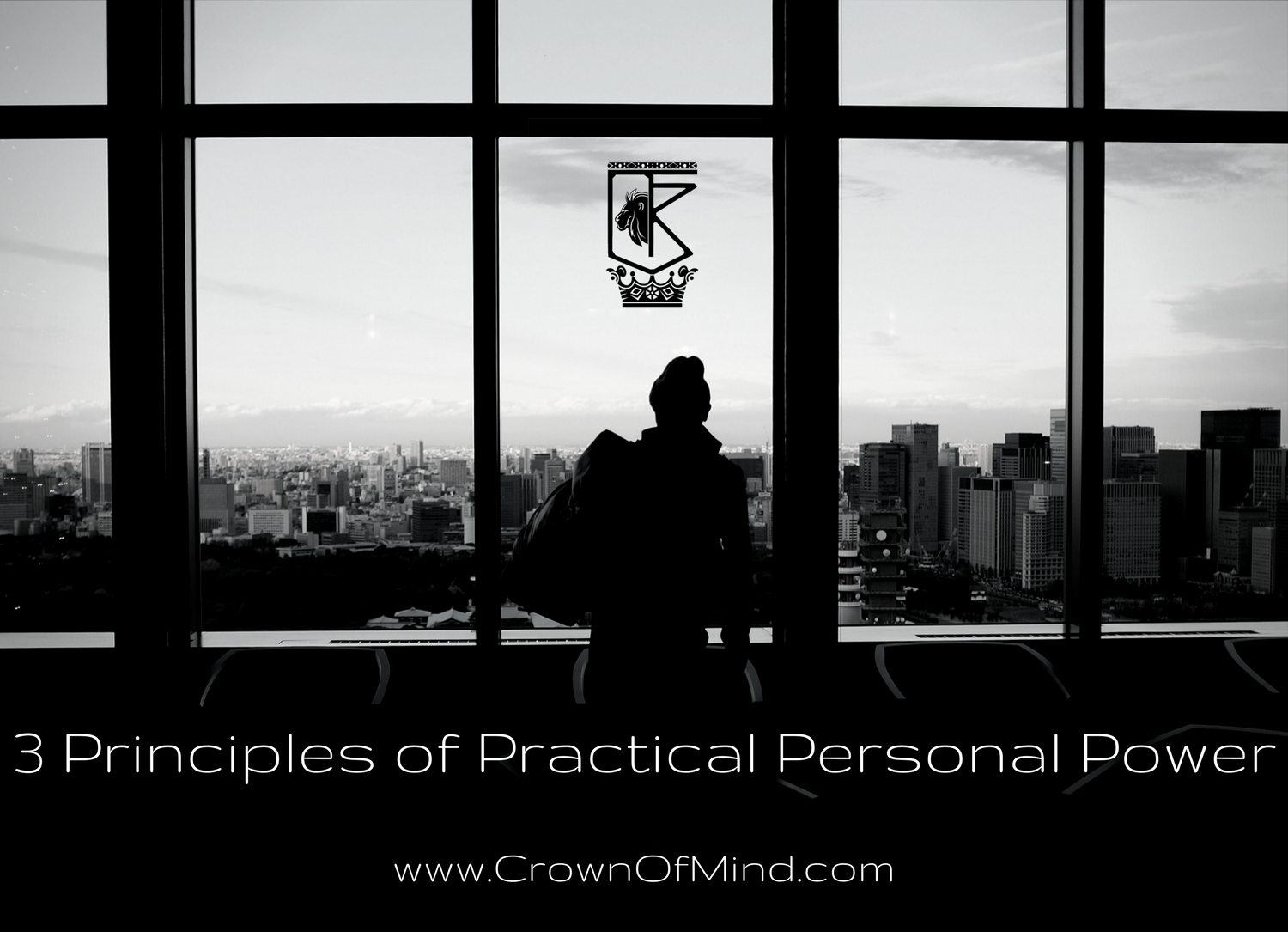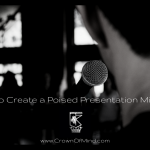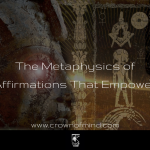“Personal power” is a catch-all term given to our ability to create our reality. This power is what enables us to step out of bed just as much as it empowers us to write a book, influence a team or dissolve a cold. As important as this power is, it is treated like a secondary medium, a tool for us to focus on nonchalantly. In both our personal and professional lives, our power provides the engine fuel to get things done. How could this be considered something to treat nonchalantly? If this is the energy that enables me to perform at my highest levels, it makes sense to make the development of this power a priority.
For context, other names given to “personal power” throughout the ages include: Holy Spirit, Ra, Kundalini, Prana, Qi/Chi, Odic Force, All is Energy, Shekhem among others. For the purposes of merging our professional and metaphysical perspectives, we’ll continue to use “personal power” in this post.
There are 3 out of the numerous principles of this power I want to highlight here, specifically because these we tend to be blind to in the office environment. This blindness manifests in us as a forgetting when our emotions are aroused and hijack our wise perception. When all is well and we feel at peace, it is easier to demonstrate personal power, to maintain its potency. It is when we face an opposition force, a resistance force that our power is tested. This may feel like a roadblock to some, but the reality is these roadblocks provide exercise for us to further strengthen our power, so we are to maintain that sense of internal strength at all times. For more detail on the nature of this resistance, listen to my audio below:
https://www.youtube.com/watch?v=uFqFh_egU4U
Experiences have no label until we give them.
This principle tugs at the heart of our attachments, from someone accidentally crashing their bike into our car scratching it to receiving an average performance review at work. At the heart of our experiences is just that, an experience, a moment engaged in the present where our being shifts in the next moment, and the next moment, and the next. What gives texture to our experiences are the words we begin to associate them with. The kid crashing the bike into the car becomes a “stupid kid” because of his action. The day becomes a “shitty day” because the car is now tainted with this mark and needs repair. That same experience can be shifted by using a different label. If the kid remains just a kid and the day remains just a day, this alone can shift one’s personal perception and thus the kind of power equipped to handle the situation.
The supervisor who gave your performance for the year an “average” operates the principle without your awareness. Now, instead of it being an assessment you can use to your advantage for improvement, you perceive the label “average” to sum up your total worth in the role. Consequently, your personal power (life force) begins to manifest “average” in more areas at the office. You speak softer, take less chances, become more subordinate and may even hold a grudge against your supervisor.
This label acts as a program planted in your subconscious and you then take it with you out of work. The label “average” travels with you home, possibly influencing your behavior with family and friends. You then go to sleep with the program running in your spirit. When you wake, all you see in the mirror is “average” and repeat the cycle. That is, until you realize that the experience of the performance review was just that, an experience, and you have the power to perceive it how you wish, by choosing the label that best supports your growth.
Side Note: If you happen to receive a low performance review and the facts of your performance do show that it was earned, a savvy supervisor will assist you in this personal power process by helping you to see it as an opportunity to improve.
It is our tendency to project these labels on experiences and assume they are true because we projected them.
Example of the two flight travelers reveals this fallacy.
One traveler realizes her flight was canceled and she needed to make a very important meeting. Immediately she shouts, “This is horrible! I can’t believe this! This airline is ridiculous!” She throws her hands in the air and then slams her tail down on the seat. Arms folded, she sits frowning and fuming. Her blood pressure raised, cortisol flowing through her system, stressed out.
Traveler number two, also with a very important meeting to make, walks to the service desk and receives the same message.
“Sorry Miss, your flight has been canceled.”
“Is it? How long is the next one?”
“About two hours Miss, sorry for the inconvenience.”
“No worries, thank you.”
Traveler number two sits down, unlocks her phone and does some work. Calm demeanor. No cortisol rush. No flailing hands. No obscene labeling.
Same information received, two different ways of perceiving and labeling.
Our self-image directs how we manifest in the work place.
Our self-image comprises beliefs, thoughts, assumptions, ideals, values, the equilibrium of our spirit. Essentially, these factors form a collective view of how we perceive ourselves and this influences how we relate in the world. This principle of personal power is critical, and follows easy (a label) logic: if our self-image is weak, then what shows up in front of us will be weak. When our self-image is weak, we “train” others to treat us as weak. This training occurs over repeated engagements that involve what we allow and do not allow and the overall perception we outwardly reflect. The same when projecting a strong self-image.
This personal power principle may trigger some readers because it alludes to self-responsibility for the kind of self-image we project. It also requires that we invest time in examining the thoughts and emotions we tend to indulge in and further responsibility for changing what we find to be ineffective.
In work place language, we have a responsibility to hold ourselves accountable to a periodic self-image performance review, and if there are areas of opportunity to improve, just like work, we are tasked to focus on those areas so we do improve.
For every physical experience there is a metaphysical.
This is based on the principle of “As above, so below. As within, so without.” What does that mean?
For someone new to this, we can approach from several views all referring to the same principle.
- Quantum physics acknowledges that matter is made of energy.
- Matter is not just made of energy at the quantum level, matter is literally dense energy, which gives it the experience of being “physical” or “solid.”
- Science shows that thoughts are things, they have form in the form of brainwaves (that we can measure right now)
- Thoughts have a relationship with our neurotransmitters, influencing connections and processes that ultimately affect the rest of our body.
- The electromagnetic spectrum comprise the forms of light we can see and cannot see.
- So we have this perceived immaterial called thought being a thing, which would be a type of matter that influences our systems, which would be made of energy.
- From this, we can expand and say that energy is the skeleton for the matter we physically sense.
- We can also expand it further and say that what we experience physically is not all that there is despite our personal beliefs about what we experience.
- Dark matter and dark energy are examples of this unseen that we know exist yet are not directly, physically aware we are experiencing them.
In our contemporary language, this knowledge verifies “As above, so below. As within, so without.” It means that our external experience is a reflection of what is happening within us.
It also means each physical experience has a metaphysical source; something is happening metaphysically (or spiritually or energetically) that is causing John Doe to consistently drop the ball on his team projects.
There is an unseen source for why Jane Doe is selected for item stock roles instead of administration.
To examine the unseen we use the seen and reflect on the universal laws in operation. More on these laws in future posts.
The trap professionals end up falling into is losing this sense of awareness that the metaphysical exists when conflict is present, solely relying on physical means to correct a problem:
- Not enough job interviews, just apply for more jobs
- Just send out more resumes
- Just quit the job when it becomes more challenging
- Just don’t speak to the coworker when there is a dispute
- Just settle for the salary offered because that’s what the number on the job app says
By doing this, we end up using only a portion of our ability to manifest our professional intent.
Bonus: We don’t go anywhere to “find ourselves.”
This is a fallacy perpetuated by a number of industry channels not worth describing here. The clever marketing would have you believe that you can go somewhere, take an expensive or luxurious trip or have an unforgettable experience and end up “finding yourself.” The truth is wherever you go, there you are, and the only place you will find yourself is by going within, not outside somewhere.
An exotic island will not automatically endow you with the calm power inherent with poised peace; it is the work you do on yourself, your self-image, realizing your nature that will bring you towards that finding. Everything else, when the work on self isn’t being done becomes a temporary distraction.
Professionally this can show up as being given access to the company car, thousands of flight points, invited to exclusive company training, seminars and resorts. Expecting to have a miraculous change. If at the end of all of it you still remain ill-grounded and stressed with a weak self-image, what good were the corporate perks?






